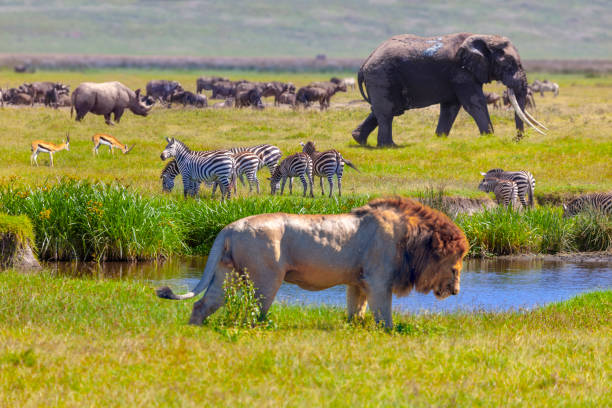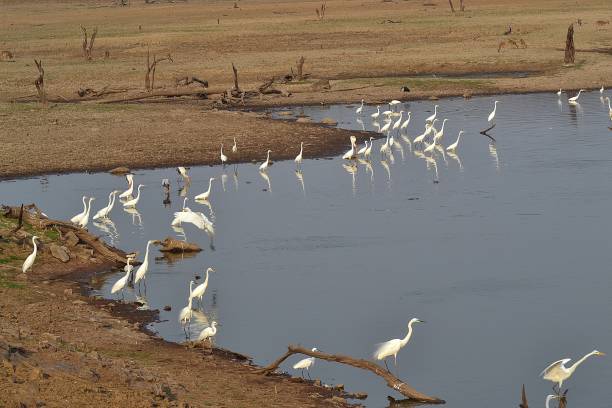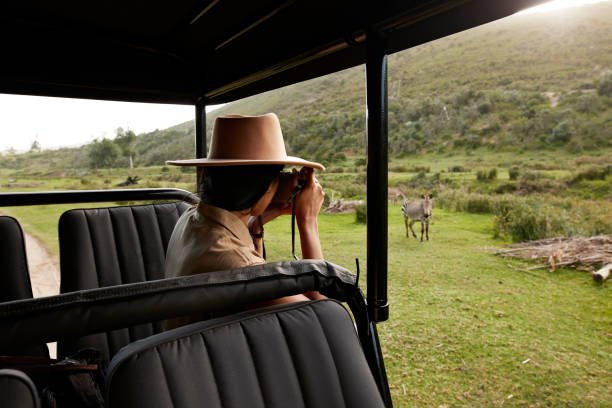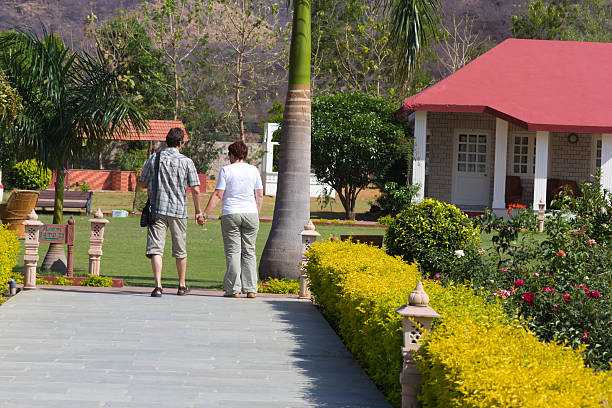Ranthambore National Park – Wild Heart of Rajasthan
Ranthambore National Park – The Wild Heart of Rajasthan

Ranthambore National Park, located in the Sawai Madhopur district of Rajasthan, is one of India’s most renowned wildlife reserves. Once the private hunting grounds of the Maharajas of Jaipur, today it stands as a powerful symbol of India’s conservation success. Spread over an area of around 392 square kilometers, Ranthambore is not just a sanctuary for Bengal tigers but also a haven for diverse flora, fauna, and rich historical heritage. The park’s unique blend of wilderness and history makes it one of the most captivating destinations for both nature enthusiasts and photographers.
A Glimpse into History
Ranthambore’s legacy stretches back centuries. The park gets its name from the Ranthambore Fort, a UNESCO World Heritage Site located within its boundaries. This massive fortress, built around the 10th century, was once a stronghold of the Chauhan rulers and later became a prized possession of the Rajputs.
In the colonial era, the forests surrounding the fort became the exclusive hunting grounds for the Jaipur royal family. Tigers and other large animals were hunted for sport, and elaborate hunting parties were organized for British officials. However, by the mid-20th century, rampant hunting and habitat destruction led to a drastic decline in the tiger population.
In 1973, Ranthambore was declared a Project Tiger reserve, and in 1980, it became a national park. Since then, it has transformed into one of India’s most successful tiger conservation stories, with the tiger population rebounding impressively over the decades.
Geography and Landscape
Ranthambore lies at the junction of the Aravalli and Vindhya hill ranges, giving it a distinctive terrain of rugged hills, rocky plateaus, and serene valleys. The park’s topography is diverse – dotted with deep ravines, ancient banyan trees, lakes, and grasslands.
The three most famous water bodies within the park – Padam Talao, Rajbagh Talao, and Malik Talao – are lifelines for wildlife, especially during the dry season. The picturesque Padam Talao is also home to the iconic Jogi Mahal, a historic hunting lodge located at its edge.
The combination of dry deciduous forests, open meadows, and rocky escarpments provides an ideal habitat for predators like the tiger, leopard, and sloth bear, as well as prey species such as deer and antelope.
24 Best Religious Places in North Indian for Devotees
Flora – The Green Guardians

Ranthambore’s vegetation is classified as tropical dry deciduous forest, typical of Rajasthan’s semi-arid regions. The park’s landscape is dominated by Dhok trees (Anogeissus pendula), which make up nearly 80% of its vegetation. These hardy trees can survive long periods without water, providing shade and sustenance to many species.
Other notable trees include banyan, peepal, neem, amla, mango, and ber. During the monsoon, the park bursts into life with wildflowers and lush undergrowth, transforming the arid terrain into a vibrant green expanse. The vegetation also includes various grasses, shrubs, and climbers that support herbivores and smaller fauna.
Fauna – The Wild Inhabitants

The Bengal Tiger – The Star Attraction
The Royal Bengal Tiger is undoubtedly the main attraction of Ranthambore. Known for being relatively camera-friendly, the tigers here are often seen patrolling lakes, resting in the shade, or marking their territory. Each tiger in the park has been identified and named by forest officials and wildlife photographers – legends like Machli (T-16), known as the “Queen of Ranthambore,” became global icons of wildlife photography.
Thanks to effective conservation, Ranthambore’s tiger population has steadily grown, with the park housing around 80+ tigers including cubs in recent years.
Other Mammals
Ranthambore is not just about tigers. It’s home to a wide array of mammals including:
- Leopard – elusive and often found in the higher rocky areas.
- Sloth Bear – known for its shaggy coat and fondness for honey.
- Caracal – a rare and graceful wild cat species.
- Hyena, Jackal, and Fox – scavengers that play a vital role in the ecosystem.
- Sambar Deer, Chital (Spotted Deer), Nilgai (Blue Bull), and Chinkara (Indian Gazelle) – the main prey species for big cats.
- Wild Boar, Langurs, and Macaques – commonly spotted throughout the park.
Birds of Ranthambore

For bird lovers, Ranthambore is nothing short of paradise. Over 270 bird species have been recorded here, making it a key destination for ornithologists. Commonly seen birds include:
- Indian Peafowl (Peacock)
- Painted Stork
- Crested Serpent Eagle
- Kingfisher
- Osprey
- Jungle Fowl
- Indian Grey Hornbill
- Paradise Flycatcher
During the winter months, migratory birds such as pelicans, flamingos, and ducks visit the park’s lakes, enhancing its avian diversity.
5 Heritage Cities in Rajasthan under 10005 Heritage Cities in Rajasthan under 10000
Reptiles and Amphibians

Ranthambore is also home to crocodiles, monitor lizards, tortoises, and a wide range of snakes, including the cobra and python. The marshes and lakes often offer glimpses of mugger crocodiles basking in the sun.
Safari Experience – Into the Wild

A trip to Ranthambore is incomplete without experiencing its thrilling jungle safaris. The safaris are conducted in two types of vehicles – Gypsies (6-seaters) and Canters (20-seaters) – both open-top, providing excellent visibility for wildlife spotting and photography.
Safari Zones
The park is divided into 10 safari zones, each with unique topography and wildlife density. While tigers roam across all zones, certain zones like Zone 3, 4, and 5 are particularly popular for frequent sightings near lakes and grasslands.
Timings and Duration
- Morning Safari: 6:30 AM – 9:30 AM (varies with season)
- Evening Safari: 2:30 PM – 5:30 PM
During winters, timings shift slightly due to shorter daylight hours. Safaris last approximately 3 hours, offering an immersive wilderness experience.
Best Tips for Safari
- Book in advance through the Rajasthan Forest Department portal.
- Carry binoculars and a camera for spotting and photography.
- Wear earthy-colored clothes (olive, beige, brown) to blend with surroundings.
- Follow park rules strictly – avoid loud noises and littering.
- Choose early morning or late afternoon safaris for best wildlife sightings.
Best Time to Visit Ranthambore
19 Famous Historical Places in India
The park remains open from October to June, with the best wildlife sightings between November and April.
- Winter (Nov–Feb): Pleasant weather, ideal for photography and bird watching.
- Summer (Mar–Jun): Hot but best for tiger sightings as animals gather near water sources.
- Monsoon (Jul–Sep): Park remains closed for tourists but is crucial for regeneration of vegetation.
Accommodation Options

Ranthambore offers a wide range of stays, from luxurious jungle resorts to budget lodges, catering to all kinds of travelers.
Luxury Resorts
- The Oberoi Vanyavilas Wildlife Resort – opulent tents with private gardens.
- Aman-i-Khás – ultra-luxurious camping experience.
- Sher Bagh – a blend of vintage charm and eco-luxury.
- Nahargarh Ranthambhore – royal architecture and modern comfort.
Mid-Range & Budget Options
- Ranthambore Regency
- Tiger Den Resort
- Anuraga Palace
- Raj Palace Resort
Most of these properties organize safaris, village tours, and nature walks for guests.
Nearby Attractions
Apart from the park, the Sawai Madhopur region offers several attractions worth exploring:
1. Ranthambore Fort
Standing tall atop a hill, this ancient fort offers panoramic views of the park. It houses several temples, stepwells, and palaces. The Trinetra Ganesh Temple inside the fort is especially revered by locals and devotees.
2. Surwal Lake
A serene lake located about 10 km from the park, perfect for birdwatching, especially during the winter months.
3. Kachida Valley
A scenic spot surrounded by low hills, known for sightings of panthers, sloth bears, and deer.
4. Jogi Mahal
Located near Padam Talao, this historic hunting lodge now serves as a Forest Guest House. The ancient banyan tree nearby is one of the largest in India.
5. Raj Bagh Ruins
The remains of old palaces, arches, and domes scattered across the park add a mystical charm to the wilderness.
Conservation Efforts and Challenges
Ranthambore stands as one of India’s greatest conservation success stories, but the journey has not been without challenges. The park has faced issues like poaching, habitat encroachment, and human-wildlife conflict. However, the combined efforts of the Forest Department, NGOs, and local communities have played a pivotal role in tiger protection and eco-development.
The Project Tiger initiative, along with the National Tiger Conservation Authority (NTCA), has ensured stricter monitoring, use of camera traps, and community involvement. Ecotourism has also provided livelihoods to locals, turning them into stakeholders in conservation.
How to Reach Ranthambore
By Air:
The nearest airport is Jaipur International Airport (180 km). From Jaipur, one can hire a taxi or take a train to Sawai Madhopur.
By Train:
Sawai Madhopur Railway Station (11 km from the park) is well-connected to major cities like Delhi, Mumbai, and Jaipur.
By Road:
Ranthambore is accessible via NH-552. Regular buses and taxis operate from Jaipur, Kota, and Delhi.
Travel Tips
- Always carry a valid photo ID for safari entry.
- Avoid feeding or provoking animals.
- Bring sunscreen, hat, and water bottle, especially during summer.
- Stay patient during safaris; sightings are a matter of luck and timing.
- Respect forest guides and follow all safety instructions.
Ranthambore Beyond Wildlife

While Ranthambore is famous for its tigers, it also offers insights into Rajasthan’s cultural and natural beauty. The local villages around the park showcase traditional crafts, Rajasthani cuisine, and warm hospitality. You can explore handmade textiles, paintings, and jewelry at local markets.
For photography enthusiasts, the park offers endless opportunities – from misty mornings and dramatic fort silhouettes to vibrant wildlife and golden sunsets. It’s no wonder that Ranthambore is one of India’s most photographed wilderness destinations.
21 Most Beautiful Places in Uttarakhand
Conclusion
Ranthambore National Park is not just a wildlife reserve; it’s a living testament to India’s commitment to coexistence with nature. The roar of a tiger echoing through the valleys, the sight of deer grazing peacefully by the lake, and the centuries-old fort standing guard above – all combine to create an unforgettable experience.
For those seeking adventure, tranquility, and a deeper connection with nature, Ranthambore is the ultimate destination. Every visit here tells a story – of survival, balance, and the timeless beauty of the wild heart of Rajasthan.
FAQ on Ranthambore National Park
1. Where is Ranthambore National Park located?
Ranthambore National Park is located near the town of Sawai Madhopur in the southeastern part of Rajasthan, India. It lies about 130 km from Jaipur and 11 km from Sawai Madhopur railway station.
2. What is Ranthambore National Park famous for?
The park is most famous for its population of Royal Bengal Tigers and offers one of the best chances to see these majestic animals in the wild. It also has historical ruins, lakes, and diverse wildlife species.
3. When was Ranthambore declared a national park?
Ranthambore was declared a Wildlife Sanctuary in 1957, became a Project Tiger reserve in 1973, and was officially designated a National Park in 1980.
4. What is the best time to visit Ranthambore National Park?
The best time to visit is from October to June.
- October to February: Pleasant weather and lush greenery.
- March to June: Hot but great for tiger sightings as animals visit water sources frequently.
5. How large is Ranthambore National Park?
The park covers an area of about 392 square kilometers, and together with the surrounding sanctuaries like Sawai Mansingh and Keladevi, the total area extends to over 1,334 square kilometers.
6. How can one reach Ranthambore National Park?
- By Air: The nearest airport is Jaipur International Airport (180 km).
- By Train: Sawai Madhopur Railway Station is the closest (11 km).
- By Road: Well connected by road from Jaipur, Delhi, and Agra.
7. What kind of safaris are available in Ranthambore?
Visitors can choose between two types of safaris:
- Jeep Safari: 6-seater open jeeps for smaller groups.
- Canter Safari: 20-seater open buses ideal for larger groups.
Both are operated by the Forest Department in fixed zones.
8. How many safari zones are there in Ranthambore?
The park is divided into 10 safari zones. Each zone offers a unique landscape and animal sightings, though all zones provide fair chances of spotting tigers.
9. How can I book a Ranthambore safari?
Safari bookings can be made:
- Online via the official Rajasthan Forest Department website.
- Through authorized travel agents or resorts near the park.
It’s advisable to book well in advance, especially during peak season.
10. What are the safari timings in Ranthambore?
Safari timings vary with the season:
- Winter (October–February):
- Morning: 7:00 AM – 10:30 AM
- Afternoon: 2:00 PM – 5:30 PM
- Summer (March–June):
- Morning: 6:00 AM – 9:30 AM
- Afternoon: 3:00 PM – 6:30 PM
11. What animals can be seen in Ranthambore besides tigers?
The park is home to a wide variety of wildlife such as leopards, sloth bears, striped hyenas, sambar deer, chital, langurs, crocodiles, jackals, and more than 300 species of birds.
12. Is photography allowed inside the park?
Yes, photography is permitted. However, professional camera equipment may require special permits and an additional fee.
13. Are private vehicles allowed inside the park?
No, private vehicles are not allowed. Only authorized safari jeeps and canters operated by the forest department can enter.
14. What is the significance of Ranthambore Fort inside the park?
Ranthambore Fort, a UNESCO World Heritage Site, stands atop a hill within the park. It dates back to the 10th century and offers panoramic views of the forest and wildlife below.
15. Are there good accommodation options near Ranthambore?
Yes, there are plenty of options — from budget hotels to luxury wildlife resorts around Sawai Madhopur. Many lodges also arrange safaris and nature walks.
16. Can I spot tigers easily in Ranthambore?
Ranthambore is one of the best places in India for tiger sightings. While sightings depend on luck and timing, many tourists do spot tigers, especially in summer.
17. Are there any rules or restrictions for visitors?
Yes, visitors must follow park rules strictly:
- Do not litter or play loud music.
- Stay seated inside the vehicle.
- Maintain silence and follow the guide’s instructions.
- Do not feed animals or step out of the vehicle.
18. Is Ranthambore safe for tourists?
Yes, it is completely safe. Trained guides and drivers accompany all safaris, and safety protocols are strictly followed by the park authorities.
19. What are some nearby attractions to visit?
Nearby attractions include:
- Trinetra Ganesh Temple (inside the fort)
- Padam Talao and Rajbagh Lake
- Surwal Lake
- Khandar Fort
- Sawai Madhopur City and Craft Villages
20. When does Ranthambore National Park close?
The park remains closed from July to September during the monsoon season for wildlife breeding and maintenance.
21. Can I visit Ranthambore in monsoon?
The main park is closed, but some buffer zones (Zone 6–10) may remain open for limited safaris during the monsoon, depending on weather conditions.
22. Is there any dress code for safaris?
Yes, wear earthy or neutral-colored clothes like beige, brown, or olive green. Avoid bright colors and strong perfumes, as they may disturb wildlife.
23. How many tigers are there in Ranthambore National Park?
As of recent estimates, there are around 80–90 tigers, including cubs, within the Ranthambore landscape.
24. Are children allowed on safaris?
Yes, children are allowed, but it is recommended that they are above 5 years of age for safety and comfort reasons.
25. What should I carry during a safari?
Carry essentials like binoculars, a camera, water bottle, sunscreen, hat, and a valid ID proof. Avoid carrying plastic items or loud gadgets.
26. What makes Ranthambore unique among India’s national parks?
Ranthambore stands out for its combination of wildlife, history, and scenic beauty — a place where tigers roam freely amid ancient ruins, lakes, and dense forests.



сервисный центр bosch москва ремонт bosch
Thanks, we will add more posts with the best content.